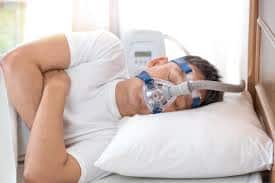
Using a CPAP machine can be life-changing for people with sleep apnea. It keeps your airways open, reduces snoring, and helps you get a better night’s sleep. But even though CPAP therapy is effective, it can come with complications that many users don’t anticipate. Knowing what to watch out for can save you discomfort and keep your therapy on track.
Common CPAP Side Effects That Can Be Managed
Many CPAP Complications users experience minor issues at first. These might seem small but can impact your sleep and motivation to continue therapy:
- Dry Mouth and Throat Irritation: This happens especially if you breathe through your mouth at night. Using a humidifier can help keep your throat and mouth comfortable.
- Nasal Congestion or Runny Nose: Low humidity or a mask that leaks can make your nose stuffy or irritated. A proper mask fit or a small nasal spray can ease this problem.
- Skin Irritation or Pressure Marks: Masks that are too tight, or worn for long stretches, can leave red marks or small sores on the bridge of your nose or cheeks. Soft mask liners or adjusting straps usually helps.
- Aerophagia (Swallowing Air): Some people feel bloated or gassy because air gets into the stomach. Adjusting the pressure settings or using the ramp feature on your machine can reduce this discomfort.
Most of these side effects are manageable if you notice them early and take simple steps.
Why Mask Fit Makes a Big Difference
The fit of your CPAP mask affects both comfort and effectiveness. A mask that is too tight can leave painful marks or headaches, while a loose mask allows air leaks, which can dry out your mouth and nose and reduce therapy efficiency.
Here’s a quick guide to mask types:
- Nasal Pillows: Lightweight and minimal, but can irritate the nostrils if the fit isn’t perfect.
- Nasal Masks: Fit over the nose and are comfortable for many, but proper sizing is essential.
- Full-Face Masks: Cover the nose and mouth, ideal for mouth breathers, but some find them bulky or restrictive.
Finding the right mask and adjusting it properly can solve many early complications.
Machine Settings Can Help Reduce Side Effects
Sometimes discomfort isn’t the mask—it’s the machine. High air pressure can cause bloating, while low humidity can dry out your airways. Most modern CPAP machines have ramp settings that start with low pressure and gradually increase, making it easier to get used to therapy.
Tips for Reducing CPAP Complications
Adjust Your Mask Often: Straps and cushions can be fine-tuned to reduce pressure marks and leaks.
- Use Comfort Accessories: Liners, chin straps, and soft cushions make therapy more comfortable.
- Maintain Your Equipment: Regular cleaning prevents irritation, infections, and maintains airflow.
- Consult a Sleep Specialist: Persistent discomfort may require a different mask or pressure adjustment.
When to Seek Medical Help
Seek advice promptly if you notice:
- Persistent nosebleeds or severe nasal irritation
- Skin infections or sores from mask pressure
- Severe headaches or facial pain
- Intense bloating or discomfort from swallowing air
Getting medical advice early can prevent minor issues from becoming serious.
Final Thoughts
CPAP therapy is a highly effective tool for managing sleep apnea, but it’s not without challenges. Minor complications like dry mouth, nasal congestion, mask irritation, and bloating are common. The good news is that with proper mask fit, machine adjustments, and simple comfort strategies, most issues can be resolved. Paying attention to these details will help you stick with CPAP therapy and enjoy better sleep, night after night.
